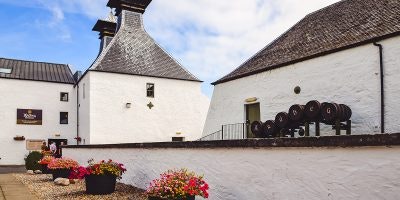In an effort to take control of their own fate, a group of quality distillers created a category all their own. When it debuted last fall, the Empire Rye category marked a sea change in the world of American spirits. But what is Empire Rye exactly, and more importantly why should we consumers care?
Empire Rye Defined
In 2015, six New York state distilleries set out on the path towards creating a new standard of identity.
Barrels at Kings County Distillery / Photo Credit: Kings County Distillery
The founding members included (in alphabetical order):
– Black Button Distilling (Rochester)
– Coppersea Distilling (Hudson Valley)
– Finger Lakes Distilling (Finger Lakes)
– Kings County Distillery (Brooklyn)
– New York Distilling Co. (Brooklyn)
– Tuthilltown Spirits (Hudson Valley)
Since the category became official in 2017, Honeoye Falls Distillery, Van Brunt Stillhouse and Yankee Distillers have joined the fold. Moreover, another eight distilleries are committed to doing so, with planned 2019 and 2020 releases.
To bear the mark of Empire Rye, distillers have to follow a set of quality standards.
Empire Rye must:
– Use a mash bill of at least 75% grain from New York, conforming to the New York Farm Distillery requirement. More specifically, 75% of the mash bill must be rye grain grown in New York state.
– Be mashed, fermented, distilled (to no more than 160 proof), barreled and matured at a single New York distillery in a single distilling season.
– Be aged for a minimum of two years in charred, new oak barrels, and enter the barrel at no more than 115 proof.
LOCATION, LOCATION, LOCATION
These self-enforced guidelines give producers a shared identity, capitalizing on a consistent minimum quality in terms of age, mash bill and production specifics. Notably, it also ties them to a local place of origin. For Colin Spoelman, co-founder and head distiller of Kings County, that locality is the key point.
Colin Spoelman / Photo Credit: Andrew David Watson-Red Wing
“To me, the Empire Rye standards are really only about location, both where the grain is grown and where the distillation happens,” says Spoelman. While there’s a two-year age minimum, he notes that the requirement is the same as it would be to qualify as a straight rye whiskey according to the TTB.
While the mash bill specification offers some constraint to producers, the category was left somewhat flexible—purposely so. As a result, each distillery can continue to produce whiskey in the style they prefer. Process and recipe are subjective indicators of quality, so it can be hard to make standards that everyone would agree on. I always prefer pot distillation, but I think it would have been hard to convince all the distillers it makes better rye, even if I believe it.”
Crucially, Empire Rye also provides distilleries with a tool for distinguishing between whiskey that is actually distilled locally versus sourced. “In today’s distilling culture, a New York certification is actually meaningful, with so much sourced whiskey and a lot of interest in high-integrity local whiskey,” says Spoelman. “It connects in a positive way with consumers.”
UNIQUELY NEW YORK
The Empire Rye mark helps to separate New York-made ryes from the mass of cookie-cutter ryes on the market today. “In the current distilling culture, the name does suggest a high level of quality, as nearly all of the rye that’s commercially available comes from the Kentucky and Indiana distillers,” says Spoelman. “I read once that 70% of all rye sold in the US is distilled at MGP in Indiana. And nearly all the rest comes from Kentucky column distillers.”
Sampling from a barrel at Kings County Distillery / Photo Credit: Kings County Distillery
Not only does this create a market stuffed with whiskeys that all taste alike, it’s also impossible for a true craft distiller to compete on price. The Empire Rye mark then offers a tool to say: we made this, we made this here, we stand behind the quality, and we believe it’s different from what you’ll find elsewhere.
“I think New York for now is a collection of high-craft producers that are really obsessive about integrity of process,” Spoelman says. “That may change over time, but I do think the Empire Ryes that exist now are really great examples of the creativity and variety that can be in rye, but maybe hasn’t been at the forefront for a long time. These are grain-forward, good distillates that are showing well at a relatively young age. It’s a good indicator of things to come.”
Looking ahead, don’t be surprised to see producers in different US regions adapting their own protocols. It’s not hard to envision this in distilling hotbeds such as the Pacific Northwest, Texas, or the Southwest. Spoelman agrees with the point, but cautions against moving too quickly ahead. “Until we all have mature whiskeys and mature styles, it’s hard to draw too many conclusions about what the landscape is going to be like,” he says.
Empire Rye, for your consideration:
Kings County Empire Rye
This Brooklyn-based distillery uses a mash bill of 80% rye and 20% malted barley in its straight rye.
Coppersea Bonticou Crag Straight Malt Rye
Made from a 100% malted rye mash bill. Fun fact: Unusually, this Hudson Valley distillery has its own malting floor.
Ragtime Rye American Straight Whiskey
Matured entirely in full-size (53-gallon) barrels for over three years.
Hudson Manhattan Rye
Made from 100% rye, 90% of which is sourced within 10 miles of the distillery.
With Distiller, you’ll always know what’s in the bottle before you spend a cent. Rate, Review and Discover spirits! Head on over to Distiller, or download the app for iOS and Android today!



